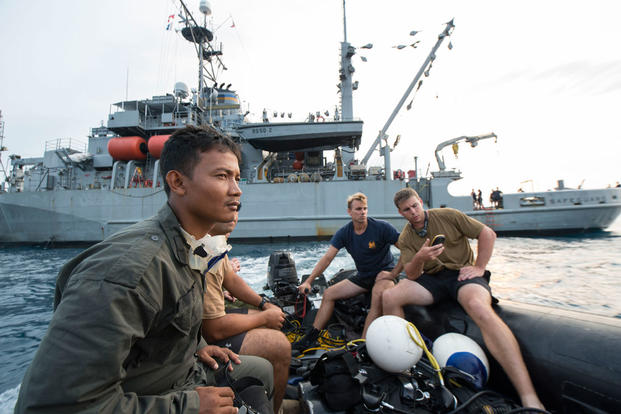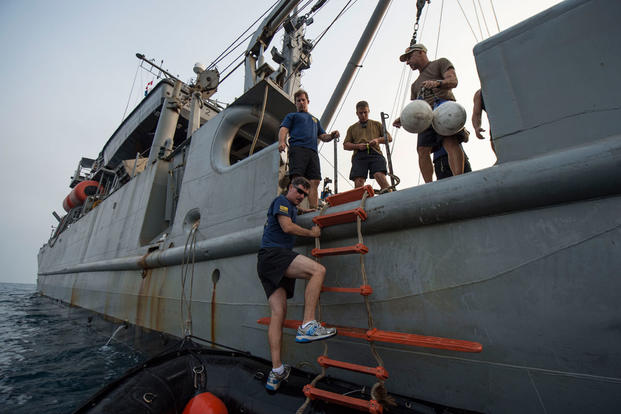SINGAPORE — Sailors from Mobile Diving and Salvage Unit (MDSU) 1 Company 1-5, embarked USNS Safeguard (T-ARS-50) and began an 80-day mission Jan. 31 to document World War II aircraft crash sites in waters around Papua New Guinea.
The Navy divers and Safeguard's crew of civilian mariners are conducting dive operations using a side-scan sonar system to gather information for a potential excavation of a B-24 Liberator that crashed off the coast of Kawa Island.
Additionally, the MDSU team is using their capabilities to search for remains of U.S. airmen at a separate Grumman TBF Avenger crash site in the area. The operations are in support of the Defense POW/MIA Accounting Agency (DPAA).
"The sites are very remote and access to the dive sites is challenging," said Lt. Mark Snyder, MDSU 1 Company 1-5 officer in charge. "A dive and salvage platform like Safeguard provides us the capability to access sites like these."
Snyder said his team must be self sufficient because of the austere location of the diving sites. It took Safeguard more than a week to arrive on station in waters near Papua New Guinea. Once on station, the diving crews used rigid-hulled inflatable boats (RHIB) to access the crash sites.
"We had to rely heavily on our small boats (RHIB) for access to the sites," Snyder said. "My team had to be very proficient in operating and maintaining our RHIBs in order to make the 30-mile round trips from the ship to the dive sites. We were operating in an area with small, acre-sized islands and reefs. It's a very unique location that many people do not get to see."
Snyder said the remote location of the dive sites gave his team a greater appreciation for the vast scope of Pacific operations during WWII and the enormous sacrifices made by U.S. service members and their families.
"These types of missions are about supporting fallen/missing service members and their families and maintaining the precedence that the U.S. is committed to bringing everyone home," said Snyder.
DPAA is a Department of Defense organization dedicated to providing the fullest possible accounting for missing U.S. service personnel to their families and the nation.
"Our divers are working hard and appreciate the opportunity to put their small boat and diving skills to use in such a unique environment," Snyder said. "It is also very rewarding to know that our work could result in the repatriation of a lost service member's remains."
Safeguard is a forward-deployed diving and salvage ship and is part of U.S. 7th Fleet, Task Force 73 (CTF 73). CTF 73 conducts advanced planning, organizes resources, and directly supports the execution of maritime exercises and operations, such as the CARAT exercise series with Bangladesh, Brunei, Cambodia, Indonesia, Malaysia, the Philippines, Singapore, Thailand and Timor-Leste; the Naval Engagement Activity (NEA) with Vietnam, and the multi-lateral Southeast Asia Cooperation and Training (SEACAT) with Brunei, Indonesia, Malaysia, the Philippines, Singapore and Thailand.































